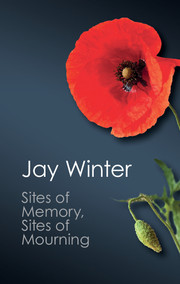Book contents
- Frontmatter
- Contents
- List of illustrations
- Acknowledgements
- List of abbreviations
- Introduction
- I Catastrophe and consolation
- 1 Homecomings: the return of the dead
- 2 Communities in mourning
- 3 Spiritualism and the ‘Lost Generation’
- 4 War memorials and the mourning process
- II Cultural codes and languages of mourning
- Notes
- Bibliography
- Index
4 - War memorials and the mourning process
Published online by Cambridge University Press: 05 June 2014
- Frontmatter
- Contents
- List of illustrations
- Acknowledgements
- List of abbreviations
- Introduction
- I Catastrophe and consolation
- 1 Homecomings: the return of the dead
- 2 Communities in mourning
- 3 Spiritualism and the ‘Lost Generation’
- 4 War memorials and the mourning process
- II Cultural codes and languages of mourning
- Notes
- Bibliography
- Index
Summary
The search for the ‘meaning’ of the Great War began as soon as the war itself. For some people that search goes on to this day. Visible evidence of that quest may be found in towns and villages throughout Europe. There are war memorials in virtually all of them: sculptures, plaques, or other objects that recall the 1914–18 war and the sacrifices it entailed.
Whom or what do they commemorate? Precisely what about the Great War do they ask us to remember? There is no single answer to these questions. Different cultural norms and religious traditions yield different meanings. First, the visible or stated subject of commemoration varied as between national communities. In France, a visitor to any major town or village will encounter a monument aux morts. This funereal term locates French war memorials within a tradition of suffering and sacrifice. In Britain and other Anglo-Saxon countries, and in Germany and Austria, the visitor will soon find his way to the local war memorial or Kriegerdenkmal. Here the specific subject of remembrance is at times fixed less precisely; the suggestion is that war memorials invite us to recall more than the central facts of loss of life and bereavement in the Great War.
But central facts they remain.
- Type
- Chapter
- Information
- Sites of Memory, Sites of MourningThe Great War in European Cultural History, pp. 78 - 116Publisher: Cambridge University PressPrint publication year: 2014

